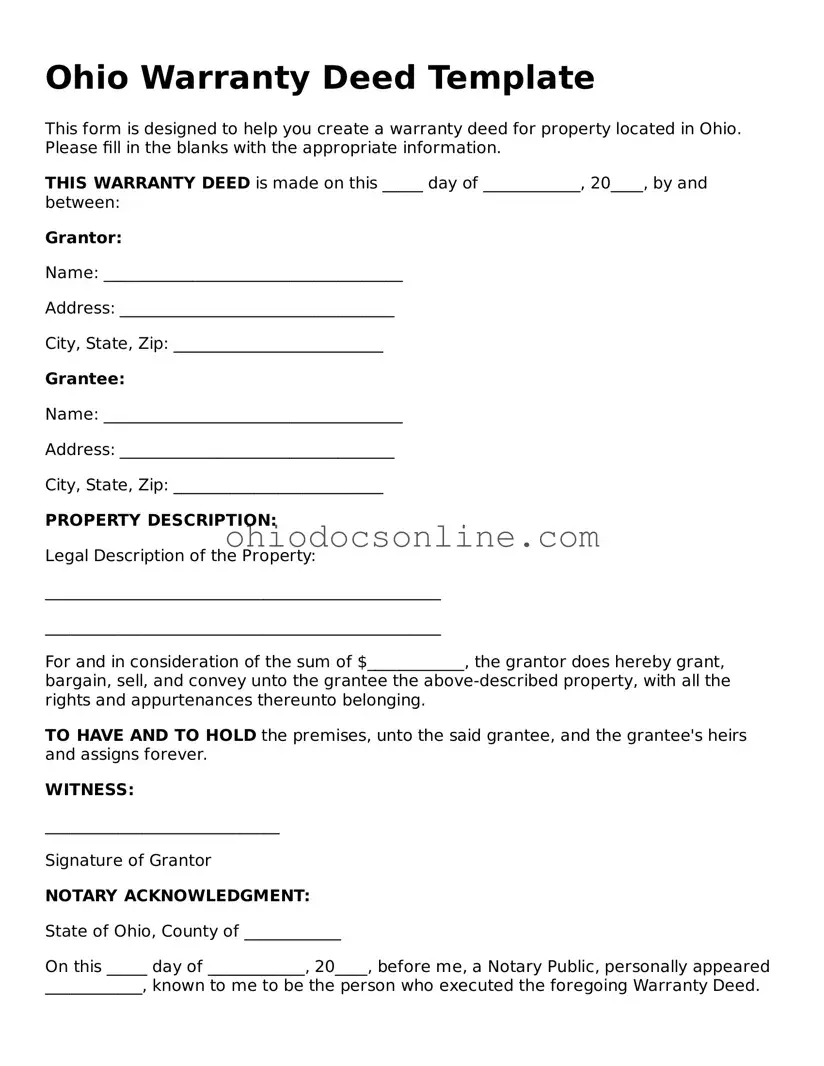Printable Deed Template for Ohio
The Ohio Deed form is a legal document used to transfer ownership of real property in the state of Ohio. This form outlines the details of the transaction and ensures that the transfer is properly recorded. Understanding its importance is crucial for both buyers and sellers in real estate transactions.
Open Editor
